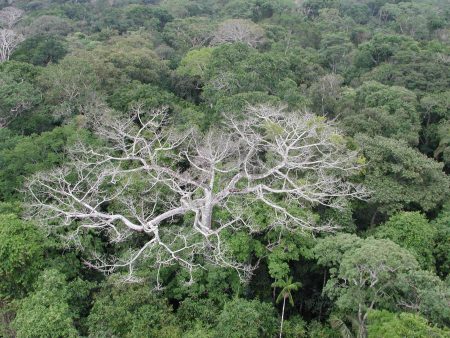September 12, 2016 – According to a new study described in the August 29, 2016 online edition of Nature Climate Change, plant trait diversity within the Amazon rainforest may enable Amazonia to adjust to changing conditions brought on by global warming. The authors of the paper entitled, Resilience of Amazon forests emerges from plant trait diversity, state that a forest ecosystem may adjust to new conditions through the extent of its biodiversity. Nowhere on the planet do we see evolutionary biology capable of adapting than in rainforests. When one species dies others quickly take fill the gap.
“This functional diversity….is thought to increase the response diversity of an ecosystem…hence, ecosystem resilience” state the authors of the study who present a compelling hypothesis “based on experimental or observational studies of forest plots covering years to decades.” Using an experimental site in Ecuador, the researchers demonstrated biomass resilience. The test site designed to mimic the Amazon basin biomass produced results that are indeed encouraging and provided conservationists with a forest management strategy to encourage plant trait diversity within rainforests. Through this approach we can ensure the forests remain significant carbon sinks and natural assists in fighting climate change.
In Ecuador the research team began with a forest that emulated pre-climate change conditions. They then exposed it to heat and water stress from the effects of climate change. They observed the impact this had on canopy trees, many of which died. This caused increased light in the understory, the area below the tree canopy, and that led to regeneration with younger trees favoured that were capable of adapting to the new conditions. In the end in the post-climate change conditions an entirely new forest community emerged capable of maintaining the same carbon balance and survival rates of the previous generation of trees.
In recent years Amazonia has experienced extensive drought conditions. In 2010 a drought impacted 50% of the Amazon forest. A fifth of the forest was described as experiencing extreme drought. A 2005 drought similarly affected Amazonia. Widespread changes to the forest canopy show up in satellite images as seen below.
The question the study answers is that even in light of climate change the range of diversity in Amazonia can indeed produce a bounce back and ensure the forest remains an effective carbon sink.










